Exploring the physical and mystical stages of this revered pilgrimage, while embracing struggle, silence and self-discovery
Author: Moshe Adar
Photos: Anne Petry
While planning my trip to gujarat and researching places to visit in this region of western India, I kept encountering references to Girnar Mountain. At first, I thought, “Okay, one more mountain. Is it really worth visiting?” But a friend of mine, a well-traveled woman, insisted this mountain could be one of the highlights of my trip. I had no idea what she meant, but I was about to find out! So, before the sun rises, take my hand, and let’s climb together up the ancient and sacred mountain of Girnar.
I’m typically an early bird, but waking up at 3:30 for a pilgrimage is quite different—especially when it involves climbing a mountain by going up 9,999 steps. Yes, you read that correctly: almost ten thousand steps! But in this month of January, the sun can be intense and temperatures rise quickly, so it doesn’t take much motivation to get me out of bed. There’s no way I’m attempting this climb during peak sunlight.
By 4:30, I’m in a cab driving from the town of Junagadh to Girnar Mountain, 3.5 miles away. At 5:30, I’m at the mountain’s base. While I can only make out its silhouette in the darkness, I know that 866 Jain and Hindu shrines, built between the 8th and 15th centuries, lie above my head. No wonder climbing Mount Girnar is one of India’s most important pilgrimages.
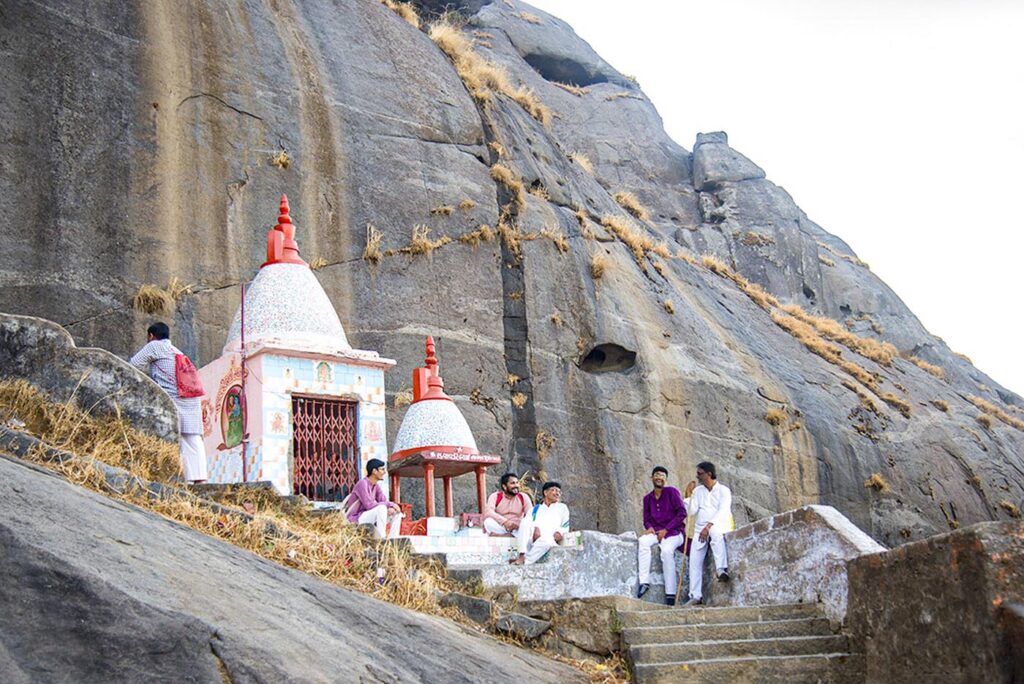
It’s pitch dark as I face the stone steps and the countdown from 9,999 begins. Almost immediately, I reach the Bhavnath Mahadev Temple, dedicated to Lord Shiva, which hosts its well-known Mahashivaratri each year. The atmosphere is remarkably quiet. Only a few people are around, and the energy is calm and serene—quite different from the hectic India I usually encounter. Is it just the early hour? Are people still waking up? Somehow, it doesn’t seem so. There’s something special here. A peaceful vibration pervades the area. I notice local vendors selling long wooden walking sticks. “I don’t really need one,” I tell myself. I’ll have second thoughts about that decision in a couple of hours!
The real climb is about to begin. The highest peak, Gorakhnath, reaches an elevation of 3,665 feet. I set aside any aspirations of reaching the top, and any sense of achievement or goal-oriented thinking. Instead, I’ll take it step by step. I can feel the presence of millions of pilgrims who have stood here before me. We’re all climbing together now.
Sacred Ground
This site holds immense spiritual importance both for Hindus and Jains. The oldest temples are more than 1,200 years old and reflect a blend of architectural styles. I find myself wondering why so many temples were built in such a remote, hard-to-reach place. One explanation could be to provide holy people living here with a sense of withdrawal from daily life. Others say the height symbolizes proximity to the heavens—to the Gods and Divinity. This is said to be a place where hundreds of sages attained their realizations, including the 22nd Jain Tirthankara, Lord Neminath.
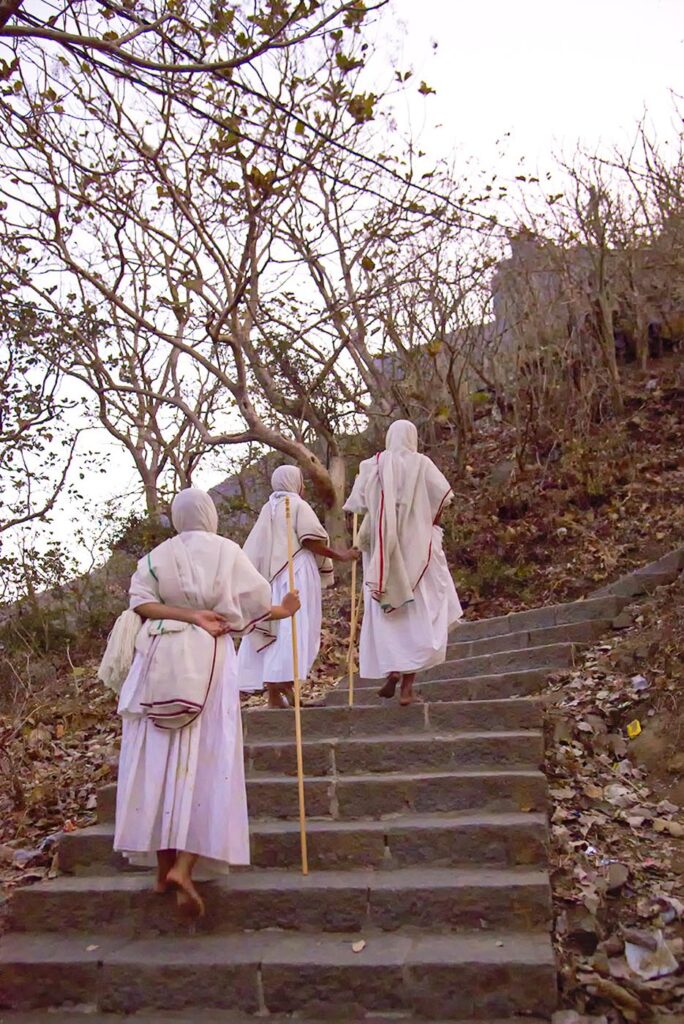
For lay people, this whole place seems to connect deeply with the concept of sadhana, personal spiritual practice. Pilgrimage requires sustained effort from the pilgrim. It’s not as simple as lighting incense and an oil lamp at home. People must step out of their comfort zones, often traveling hundreds of miles across states using local transportation; and when they finally reach their destination, they discover they must climb a mountain or walk barefoot for hours to complete their journey. Such physical challenge can push people into a deeper state of awareness, perhaps a more self-reflective mode. They typically talk less, listen more and become more connected to the present moment. Though they may have traveled with family or friends, the journey becomes individual—just you and the Divine.
Dawn’s Embrace
As I climb, the Sun begins to rise. I pause to take in my surroundings. The cool breeze washes over me as darkness transforms into light. The beauty of nature surrounding Girnar Mountain is breathtaking. Soft sunlight gently bathes the hilltops, and the land below gradually becomes visible and seems to extend to infinity. At this moment, I already know the journey is worthwhile. Though many stairs still lie ahead, my feet feel lighter now. I’m floating, carried by something greater than myself—carried by spirit, tradition, and a harmonious unity with nature, people and life itself. “Perhaps this is why pilgrimage requires such effort—this is sadhana,” I think to myself. We step outside ourselves and our own little bubble, which can sometimes be petty and self-centered.
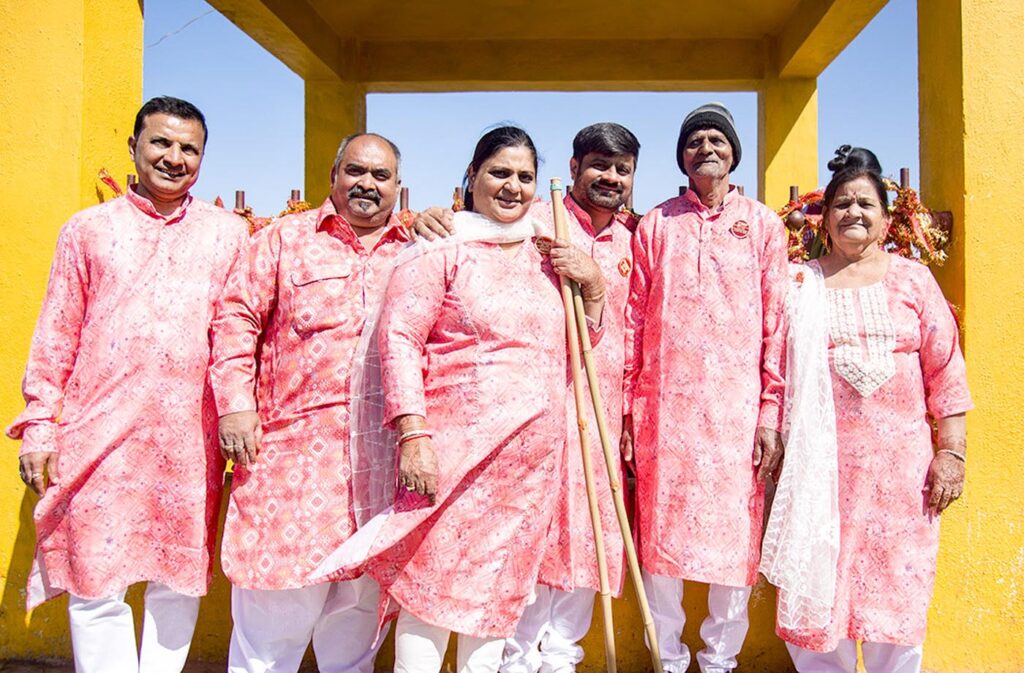
I continue climbing, and now when I encounter others, I see them more clearly. I notice a woman laborer carrying a bag of cement up the stairs. I take the bag from her, placing it on my own head as I climb. I can only offer her a few moments of rest. She’s incredibly strong and certainly doesn’t need my help, but perhaps she understood that I needed to make this gesture.
Unexpected Connections
As I climb, I pass an Indian couple in their fifties wearing matching kurtas. The beautiful flashy pinkish-orange color of their garments catches my eye. Ten minutes later, I notice shirts of the same color again, on four different people. “There must be a special sale somewhere in town,” I think to myself. But I keep seeing more people in pinkish-orange, and I finally ask about it. “We’re a group of 200 friends and family doing this pilgrimage together,” explains Rajesh Mahindra. “We’re the Class of 1990 from a boys’ boarding school in Mumbai.” “And this is your reunion?” I ask. “It sure is.”
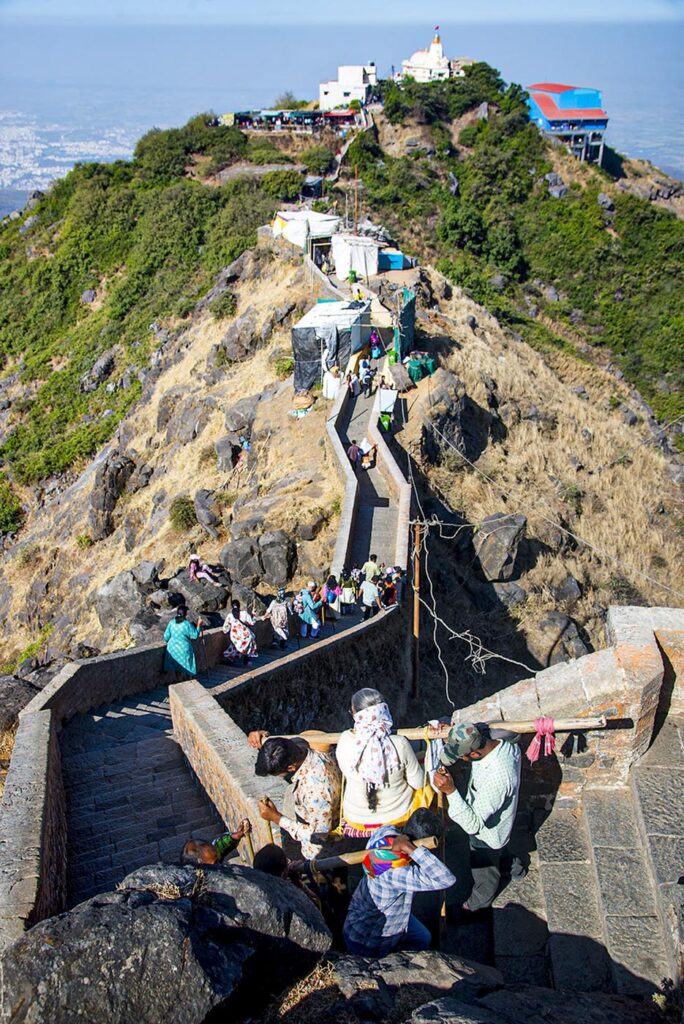
Every day brings new learning. My idea of a school reunion involves gathering at a venue with snacks and drinks, endless small talk, and sharing memories. But this group has elevated the concept to something unique and inspiring—combining friendship, tradition, family ties, and spiritual journey—all the important aspects of life. This holistic approach reminds me of the Sanskrit word vipassana, which means “clear seeing” and suggests seeing the whole picture at once. Through this lens, a school reunion pilgrimage makes perfect sense.
Holy Pathways
Along the path, I pass numerous roadside temples. These aren’t large complexes you can enter, but simple stone structures housing Deities or saints. Small groups are gathered around almost every temple. Some use them as an excuse to rest, while others take the opportunity to pray and meditate. Once again, this demonstrates the vastness of Hindu and Jain traditions—a multiplicity where each person can find their own channel to connect with the Divine and the inner Self.
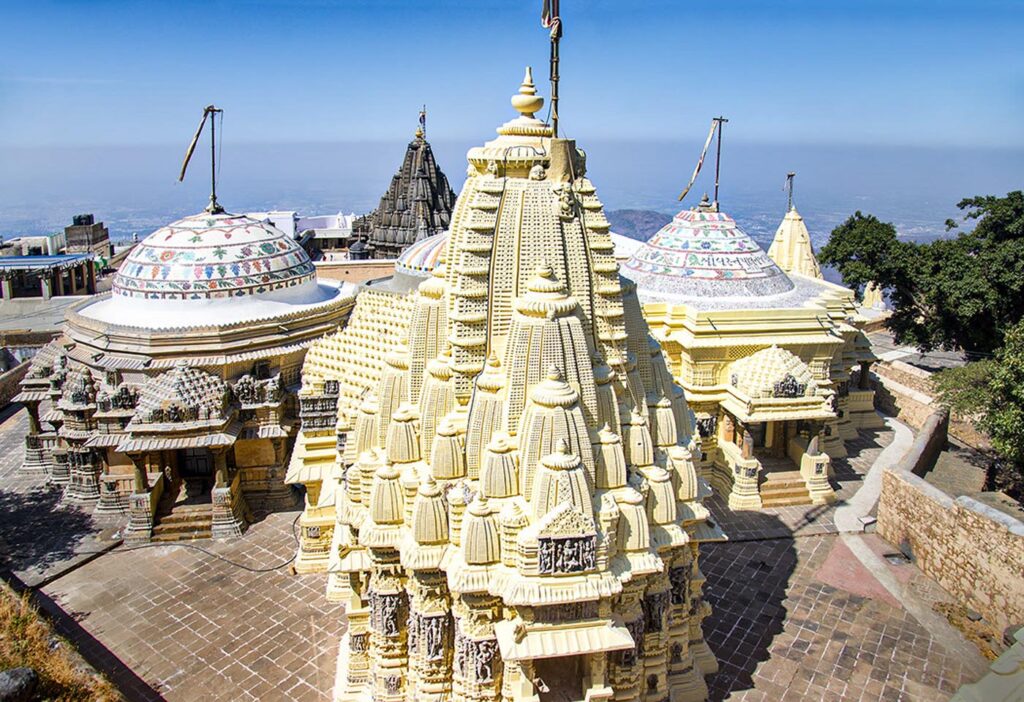
Further up, I reach the first major temple complex—the Jain Derasar, dating back to the 12th century. Standing here, surrounded by structures nine centuries old, I imagine the simple construction methods used to build them, picturing thousands of laborers climbing this same path while carrying sand, rocks and heavy tools. The architectural style is stunning—high, pointed temples surrounded by marble floors. The people are welcoming, and the atmosphere is pleasant.
I’ve arrived on an auspicious Jain holiday, and there’s a festive feeling in the air. People are dressed in their finest clothes, and a massive prayer ceremony is taking place inside the main temple, where women sit on one side, men on the other, all facing the shrine and listening attentively to the priest.
I walk around admiring the beauty while trying not to look too much like a tourist. Before leaving, I’m offered prasadam, which I gratefully accept, hoping these sacred treats will energize and motivate me for the remaining climb.
The Physical and Spiritual Journey
My legs are now letting me know they’ve been working for three hours straight. I thank them for their service and tell them next time I’ll consider using walking sticks. I reflect again on the physical aspect of sadhana. I recall other major pilgrimage sites in India that demand significant effort. Take Arunachala Mountain, for example. Every month in the city of Tiruvannamalai in Tamil Nadu, hundreds of thousands gather to perform Girivalam Pradakshina (clockwise circumambulation of the sacred mountain). It’s an eight-and-a-half-mile walk. Most people do it barefoot. Believe me, you don’t want to know the temperature of the black asphalt during South India’s scorching summer—it’s hot enough to damage car tires. Yet occasionally, you might even observe a devotee completing the journey by rolling their body along the ground the entire way. During the Girnar Parikrama Festival, which draws thousands of pilgrims annually, people perform a similar circumambulation around Girnar Mountain as well.
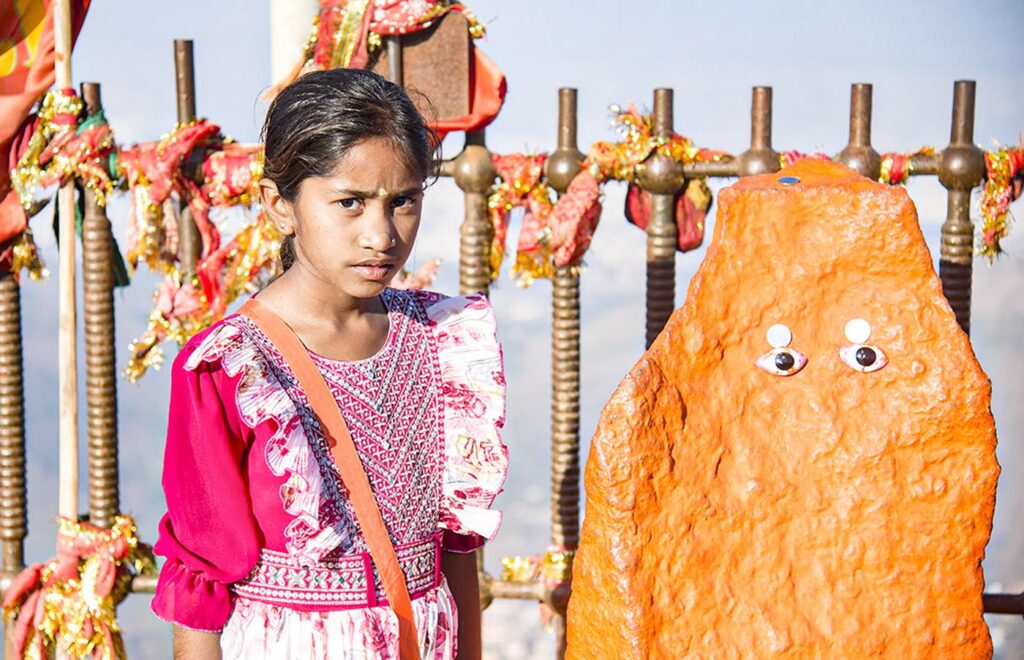
Another famous pilgrimage requiring significant effort is the Kailash Mansarovar Yatra, a journey to Mount Kailash in Tibet. This site is considered holy by Hindus, Buddhists, Jains and followers of the Bon religion. Known for its challenging conditions, this pilgrimage reaches altitudes of 18,500 feet. Some pilgrims perform the Kailash Parikrama (Kora), a 32-mile circumambulation of the mountain, typically completed over three or four days. Believers undertake these pilgrimages without hesitation, often bringing their children who begin absorbing the values of sadhana, tradition, and devotion from an early age.
Generations of Faith
A memorable interaction with a family from Bangalore—a mother and her two children—illustrates the complex layers of tradition and personal belief. I asked Shanaya Hebbar, the 23-year-old daughter, about her reason for making this journey. “I’m only doing it for my Mom,” she initially said. The mother explained, “We came to honor our ancestors, to bring them peace and ask forgiveness for our misdeeds.” I asked Rohan, the 14-year-old brother, if he too was just there to please his mother. He replied firmly: “Not at all. I truly believe in this. I’m deeply connected to our tradition.” “Yes, he loves it very much, he’s very devoted,” his mother added.
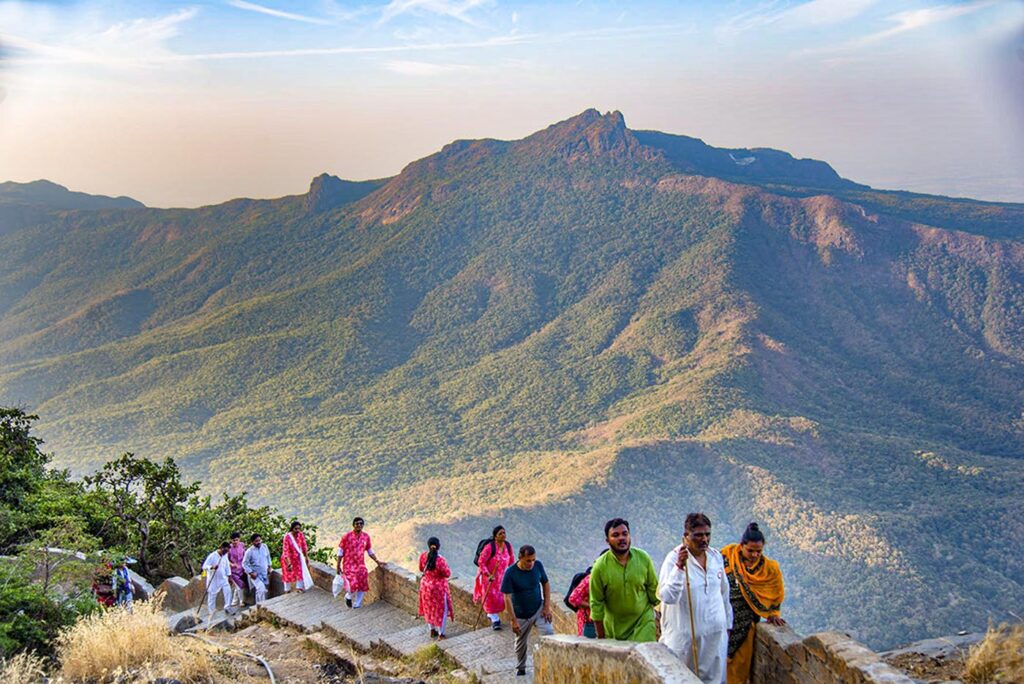
I asked Shanaya politely but perhaps a bit provocatively, “So I guess when you have children of your own, you wouldn’t bring them here?” Silence filled the space. “Well,… I’m not sure about that; maybe I will.” I could see how her certainty had softened into questioning, perhaps even openness. This moment reveals the profound power of tradition. Of course, children can rebel, but when confronted with the crucial moment of potentially breaking the chain of generations who came before them, they often hesitate and reconsider. Few want to be responsible for ending such a noble lineage.
This reflects the strength of Hindu family structure and its resilience. Families remain largely united within modern society. Elderly parents live with their children and grandchildren, who grow up breathing the oxygen of Hindu beliefs. While outer circumstances may change as India modernizes, we’re still far from seeing any major collapse of Hindu tradition.
Philosophical Perspectives
Another meaningful encounter is with a family from Agra, a brother and two sisters in their forties. They are on a 15-day trip honoring their deceased father, accompanied by their father’s attendant, who had worked for him for 40 years. These are highly educated people with extensive knowledge of Hinduism, philosophy and other belief systems, and they offer nuanced insights.
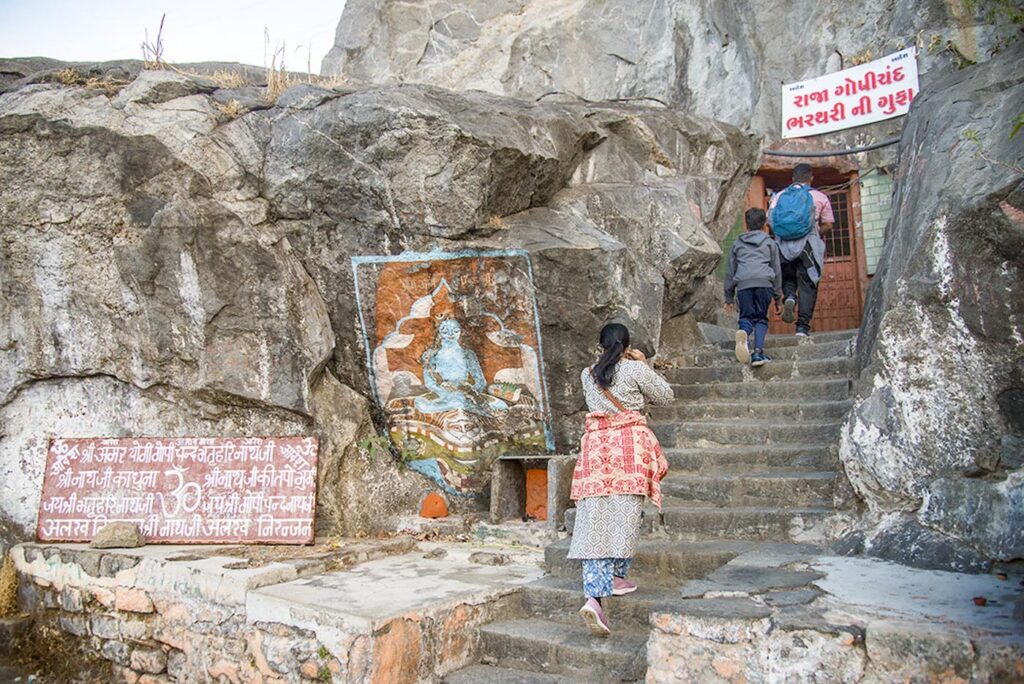
Vinay Chandra Seth explains, “We believe in the one Reality, Advaita Vedanta. While we respect rituals and various beliefs, we personally don’t follow them strictly. We believe in moksha, liberation, and feel it may take many centuries to achieve it, so we hope for human rebirth, which is the optimal realm for reaching the goal.”
Kirti Tandon, one of the sisters, adds another dimension: “Pilgrimage to holy places is like accumulating spiritual merit for a better reincarnation and ultimately reaching moksha.” I ask about people unable to make the journey due to financial or health constraints, and Kirti is reassuring: “For those who can’t afford to travel in India or go on pilgrimage, there are other ways to gain merit, like japa, bhakti, karma and yoga; yet those strongly called to pilgrimage might seek community support or donations to make their journey possible.”
During our discussion about the essence of pilgrimage, they share a viewpoint I’ve also heard from many others, that pilgrimage is a great activity for people over 60, who have fulfilled their worldly duties and responsibilities: “It’s a time to dedicate yourself to a higher, ultimate purpose.” Vinay also explains the significance of the Char Dham, the four most sacred pilgrimage sites located near the four corners of India. You can read the Hinduism Today article about them here: nall.ai/char-dham
Paths to Enlightenment
Speaking of physical rigor, asceticism represents another form of exertion in sadhana. Physical endurance and mental discipline, such as practices involving self-restraint, like fasting, serve as pathways to spiritual goals. This aspect of sadhana, which involves effort and striving, relates to the term tapas, practiced as a form of self discipline and purification. Tapas literally translates to “spiritual heat,” symbolizing the process of demolishing one’s vasanas—mental impressions and deep-rooted habits. Pilgrimage, when difficult, is also considered tapas.
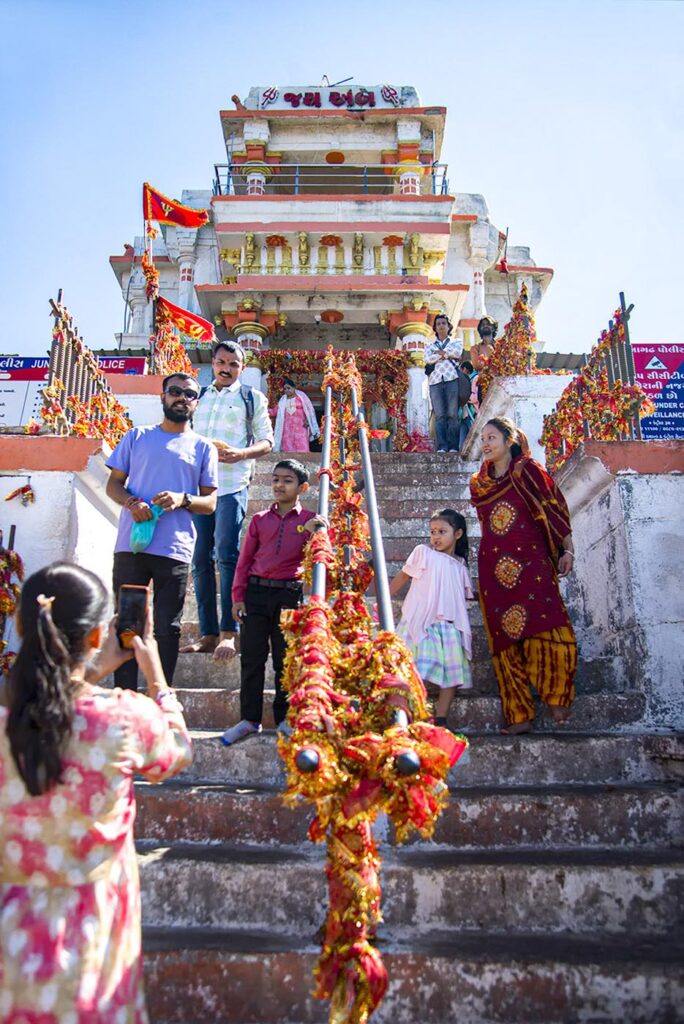
Prayashchitta, penance, is another significant and closely related concept for spiritual purification and atonement. Prayashchitta is seen as a way to cleanse oneself of negative karma (papa) accumulated through wrongdoings. The primary goal is personal transformation rather than punishment. It addresses negative karma from both current and past lives, preventing future negative karma by changing one’s thoughts and actions. It can include things like meditation, fasting and dietary restrictions, pilgrimage to sacred sites, charitable acts and service, recitation of mantras, and ritual bathing. Underlying all these practices is the pursuit of spiritual progress, Self-realization and liberation.
Amba Mata Temple
As I continue ascending the stone steps of Girnar Mountain, I finally reach a central site of this journey. Located on Gabbar Hill—the first peak, approximately 5,000 stairs from the mountain’s base—is the Amba Mata or Ambaji Temple. This site boasts a rich history dating back to the 8th century, with the earliest textual mention in 783ce. The current temple structure, constructed in the 15th century, is an architectural marvel of simple yet elegant design, made of white marble and featuring gold cones. The temple is dedicated to Mother Goddess Amba, believed to be a manifestation of the Goddess Durga.

Some say this site has been worshiped since pre-Vedic times. It is considered one of the revered Shakti Pithas of India—Hindu temples dedicated to various forms of the Goddess Shakti, also known as Devi or the Divine Mother. Legend has it that Sage Vyasa, said to have composed the Mahabharata, meditated here. Another tale tells of a shepherd boy discovering the Goddess’s murti on Gabbar Hill, leading to the temple’s establishment.
Pilgrims consider this a powerful center of spiritual energy. They believe visiting brings blessings, protection and spiritual upliftment. The temple is especially popular among newlyweds seeking blessings for a happy marriage. Their presence adds a festive atmosphere—seeing all these young couples with sparks in their eyes as they take their first steps toward what they hope will be long and meaningful relationships.
Bridging Past and Present
Modern progress and technology have transformed Girnar Mountain’s accessibility. For centuries accessible mainly to the physically fit, the site now offers a cable car station at the mountain’s base, which provides a 7,600-foot ride that saves visitors a climb of 5,000 stairs and delivers them very close to the Amba Mata Temple. It’s heartwarming to see elderly visitors and those with physical limitations step off the cable car, realizing they’re nearly at their desired destination.
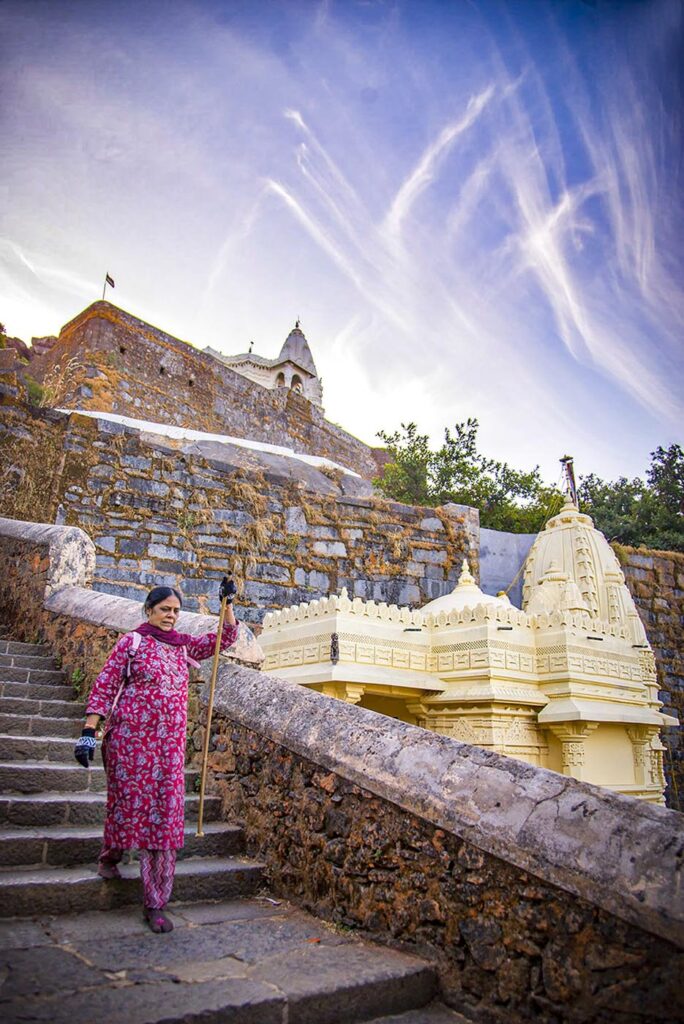
From this point, porters (also known as bearers) are available. Two porters are needed to carry one person, who sits in a specially designed chair attached to wooden poles resting on the porters’ shoulders. Given the climb’s demanding nature, the porters use a supporting stick that allows them to rest by placing it under the main poles, temporarily relieving their shoulders of the load. These porters enable disabled individuals to reach a holy place, providing them the opportunity to complete their long-awaited pilgrimage. And although they are paid for their service, I cannot help thinking that this is their form of sadhana.
Temples of the Peaks
The mountain’s summit reveals a breathtaking panorama of spiritual landmarks. Atop one peak sits the Kalika Temple, a shrine dedicated to Goddess Kali, drawing devotees seeking protection and inner strength.
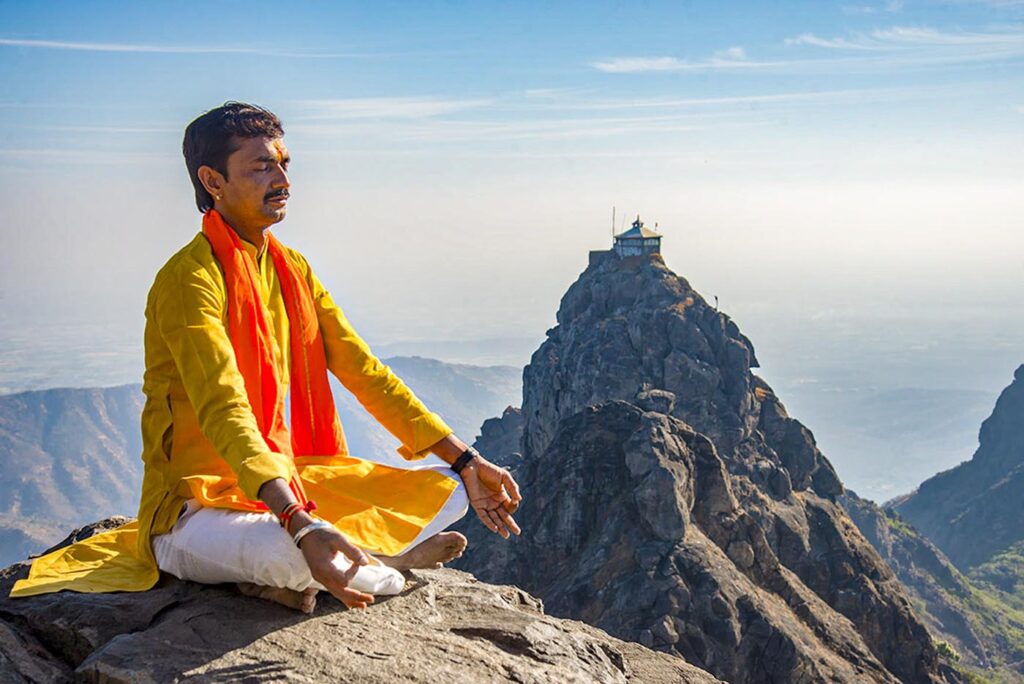
The view opens my heart wide. With no warning, I notice the most impressive sight I could ask for—the Dattatreya Temple, perched alone on a triangular pointed rock at the mountain’s highest peak! Its isolation speaks volumes. Standing apart from mundane affairs, it vibrates with an extraordinary stillness and calm. I have seen The Crown Jewel.
This holy site, one of Hinduism’s most revered, is dedicated to Guru Dattatreya. It reportedly houses sacred footprints of the sage, enhancing its spiritual significance. The architecture reminds me of an eastern pagoda, giving it a universal, timeless quality, as if quietly inviting me to join it in this serene state. The walk there is pretty long. On an intermediate peak, I discover another significant site—a temple dedicated to Gorakhnath, a revered saint in Hindu tradition associated with yogic practices. This temple attracts followers of the Natha sects, adding another layer to the mountain’s rich spiritual tapestry.
With a bit more to go, the path descends before the final climb. My feet move on their own now. I witness my body being led by something greater as I take the final steps. The five-hour journey culminates when I set foot on the 9,999th step. The experience feels not like a triumph nor an achievement but simply a profound sense of rightness. Being here among the clouds, I recognize myself as a small part of this unique pilgrimage, a mere speck in a broader picture.
All good things come to an end. It’s time to go back. As I descend, I pass again all the sites, temples and views. I pass by the porters, the group in matching kurtas, retracing the path that has become much more than a physical journey. A sense of gratitude to life arises, for allowing me to be physically fit to take this adventure.
Reflections
At the mountain’s base, memories of the day’s encounters flood my mind. I realize something remarkable. My path has intersected with countless others, and we all share something precious in common—we have climbed the sacred Girnar Mountain together on the same day. Despite our different backgrounds, languages, and motivations, we have all experienced a glimpse of the Divine and a feeling of profound unity.
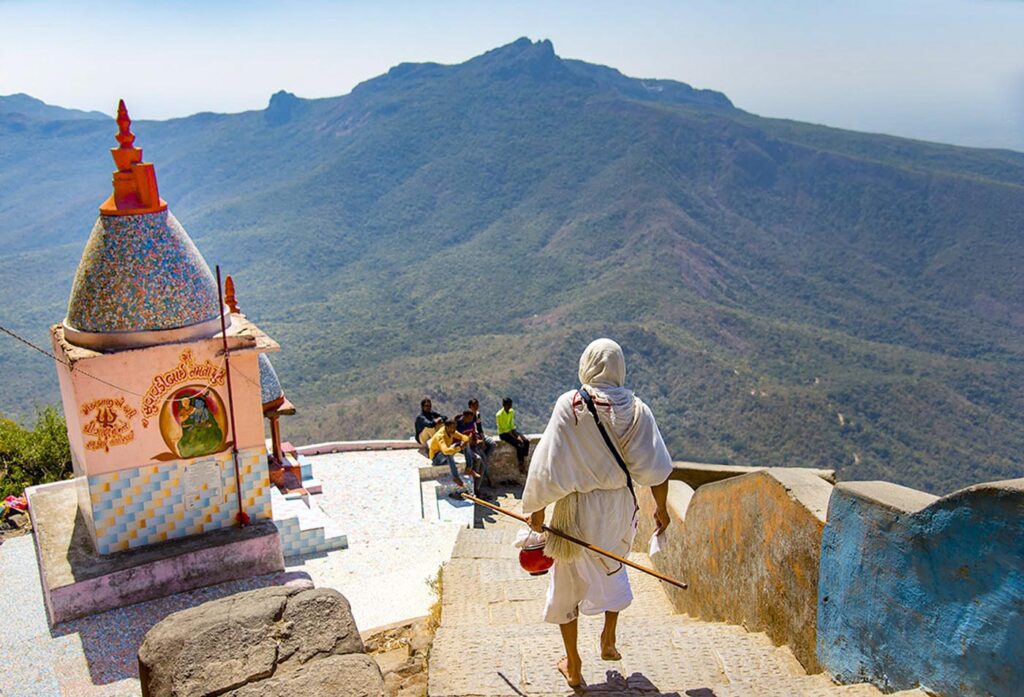
Even a journey of ten thousand stairs begins with a single step. As the day comes to an end and the mountain’s silhouette fades into dusk, I realize that Girnar is more than just a geographical location; it’s a living testament to the resilience of spirit and tradition. Physical challenges meet metaphysical quest. Each step of the way represents not just a movement upward, but a journey inward.
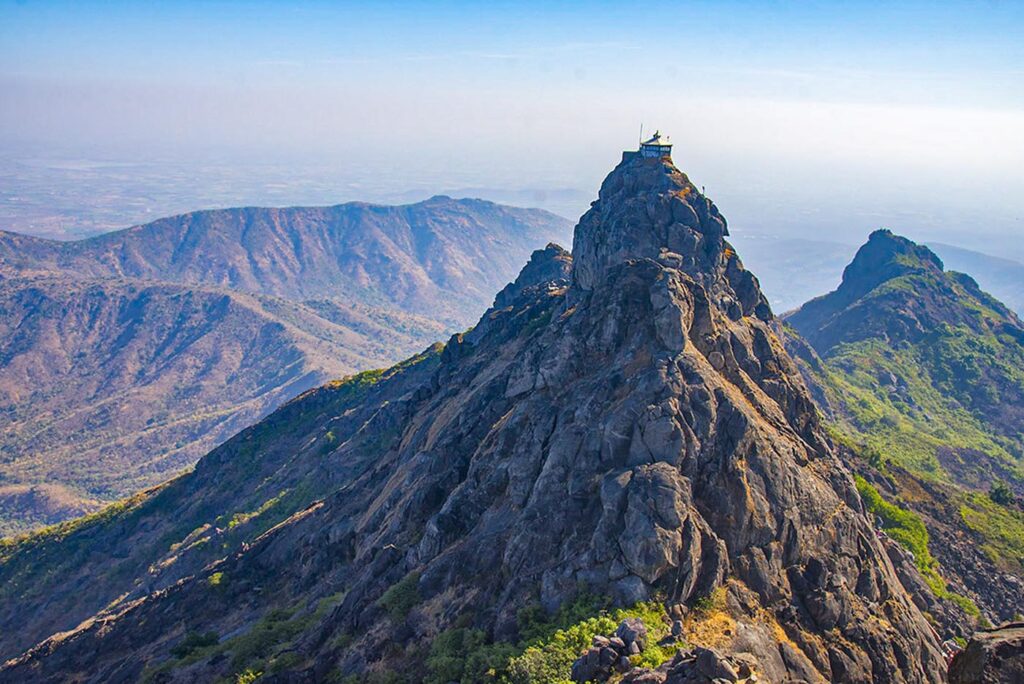
The Girnar mountain is older then The Himalayas….. Geogrophycally it’s an agnicious rock . Spiritually The Girnar has considered as the home of Yogis, Jatis, and sadhakas….the writer of this well worded and self experienced article has been successfully drawn a wrod picture of his journey to the Girnar. The state government of Gujarat has put some extra efforts to make available facelities for elderly and physically challenged pilgrims. The annual circulation to the foot hills of The Girnar is most attractive and mirroring the deep faith of the people of saurashtra region of western part of India. Hundreds of thousands of pilgrims walk circulating the Girnar in the month of November every year. Another most vibrant and traditional event at the foothills of mount Girnar is The Maha shivratri mela, which is an annual affair with the foot march of Naga ( without any cloath on body ) sadhus …. These are the some of the best spiritual events related to the Girnar….